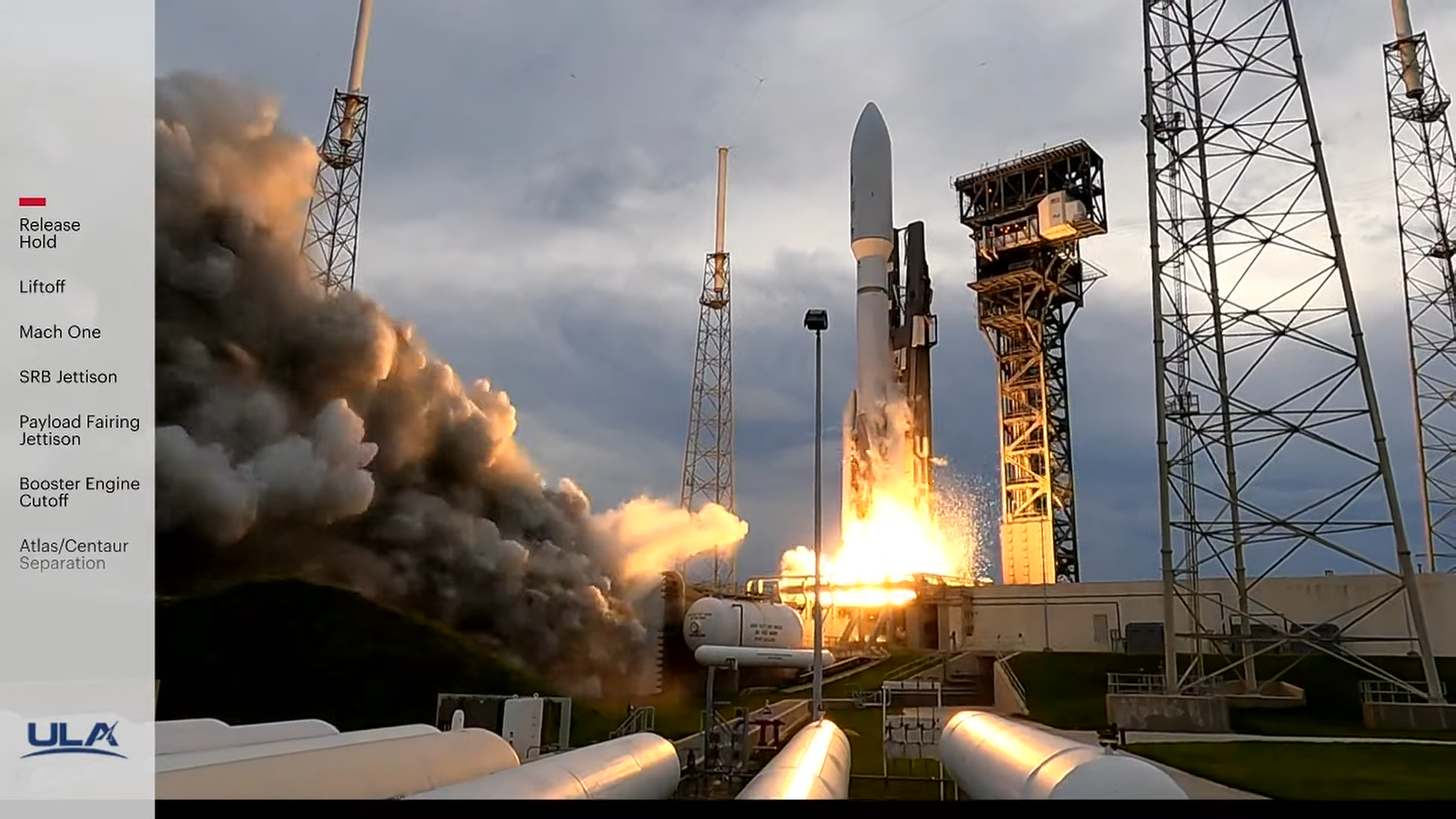
United Launch Alliance (ULA) is now deep into the final “quarter-century” of flights of its Atlas V, as it prepares to retire this workhorse of its booster fleet and transition to Vulcan-Centaur later in the present decade. A rarely-used variant of the “Mighty Atlas”—numerically designated “541”, equipped with a 17.7-foot-diameter (5.4-meter) Short Payload Fairing (SPF), four strap-on solid-fueled boosters and a single-engine Centaur upper stage—took flight from storied Space Launch Complex (SLC)-41 at Cape Canaveral Space Force Station, Fla., at 7:15 p.m. EDT Friday, following a 24-hour delay due to poor weather. ULA’s fourth mission of 2022 is tasked with the deployment of the dual-satellite USSF-12 payload “stack” for the U.S. Space Force and the Department of Defense.
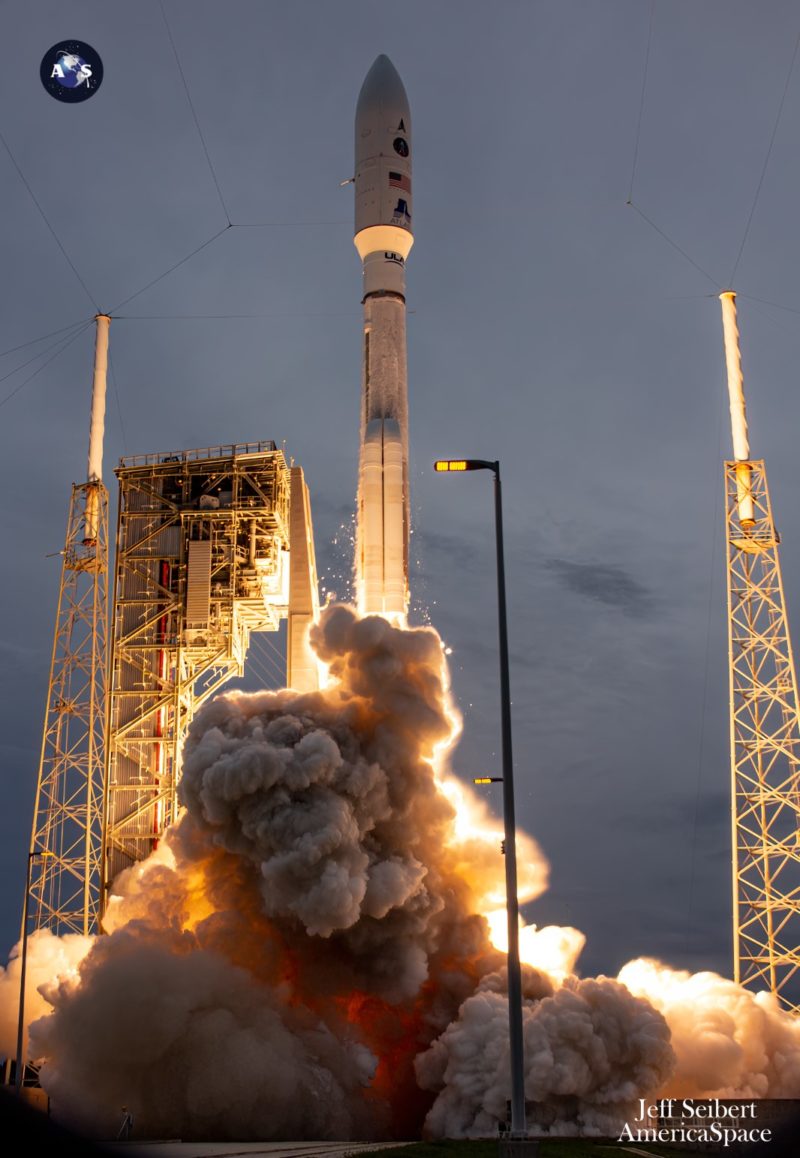
It marked the second launch from the Space Coast in a little more than a day, following SpaceX’s successful lofting of a previously-flown Falcon 9 booster from neighboring Space Launch Complex (SLC)-40 on Wednesday, carrying the SES-22 geostationary communications satellite. But weather conditions both for Thursday’s opening launch attempt for USSF-12, and a backup opportunity on Friday, appeared somewhat iffy, with only a 60-percent probability of acceptable conditions.
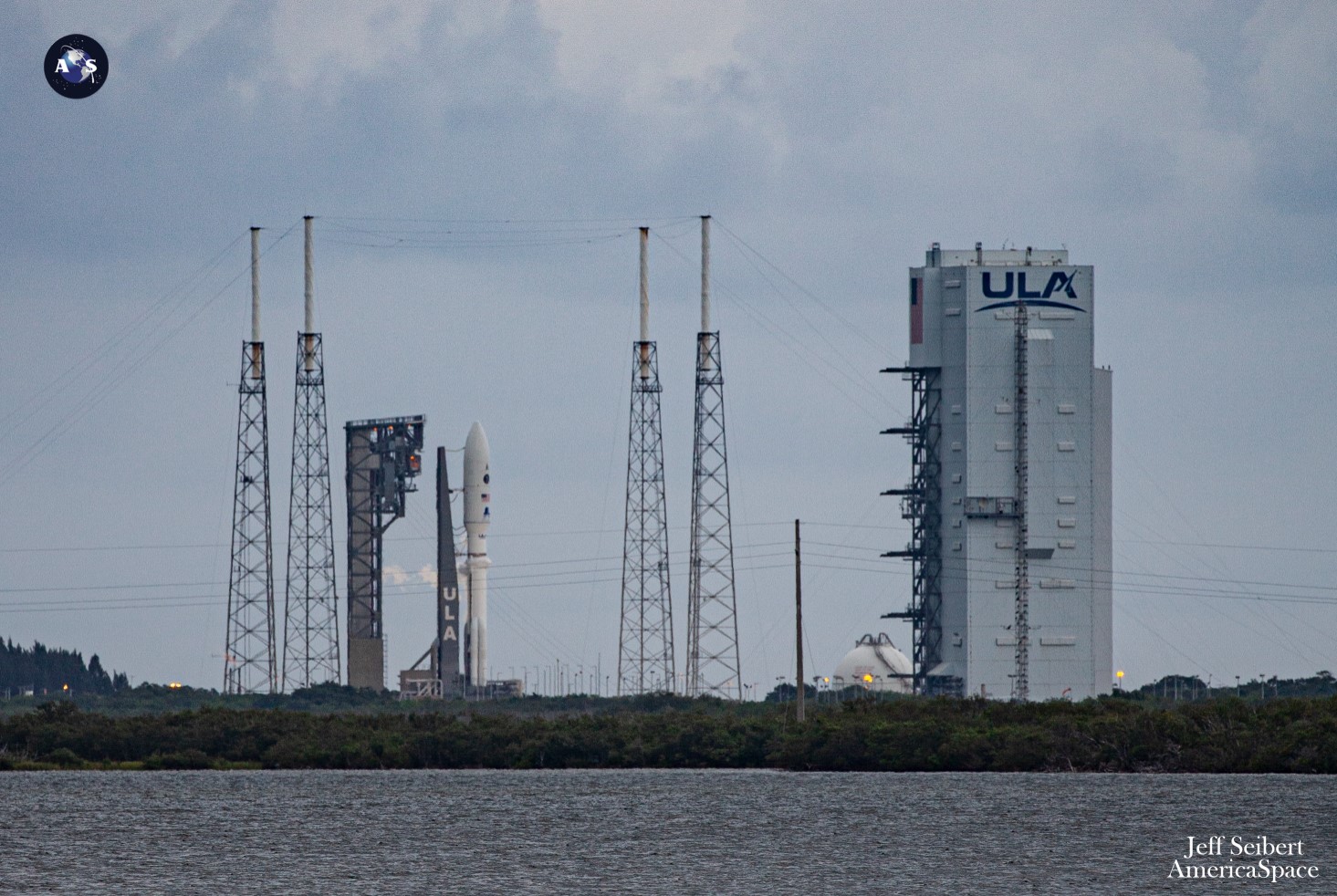
“Surface high pressure over Bermuda with the ridge axis remaining to our north this week will bring us east-to-southeast flow locally through Friday,” noted the 45th Weather Squadron at Patrick Space Force Base in its Wednesday morning update. “This favors overnight and morning showers, with drier evenings.”
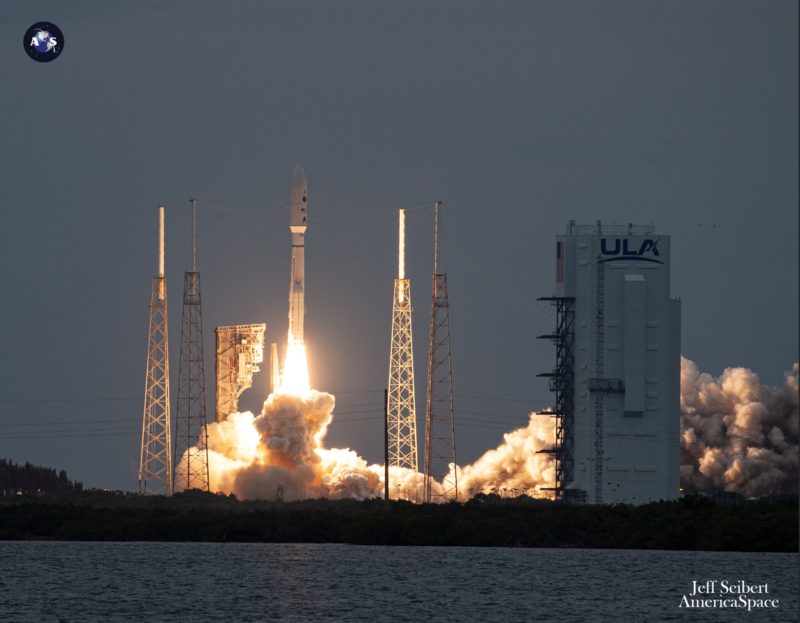
A higher-than-average moisture content and a weak, westward-moving surface wave were expected to increase the likelihood of morning showers and mid-afternoon storms, diminishing in the evening. All told, the principal issue for both Thursday and Friday was a possible violation of the Cumulus Cloud Rule.
The geostationary-bound USSF-12 payload for tonight’s mission was contracted to ULA back in March 2018, part of a combined award worth $351.8 million. Under the language of that contract, ULA would deliver what were then known as AFSPC-8 and AFSPC-12, flying on behalf of Air Force Space Command.
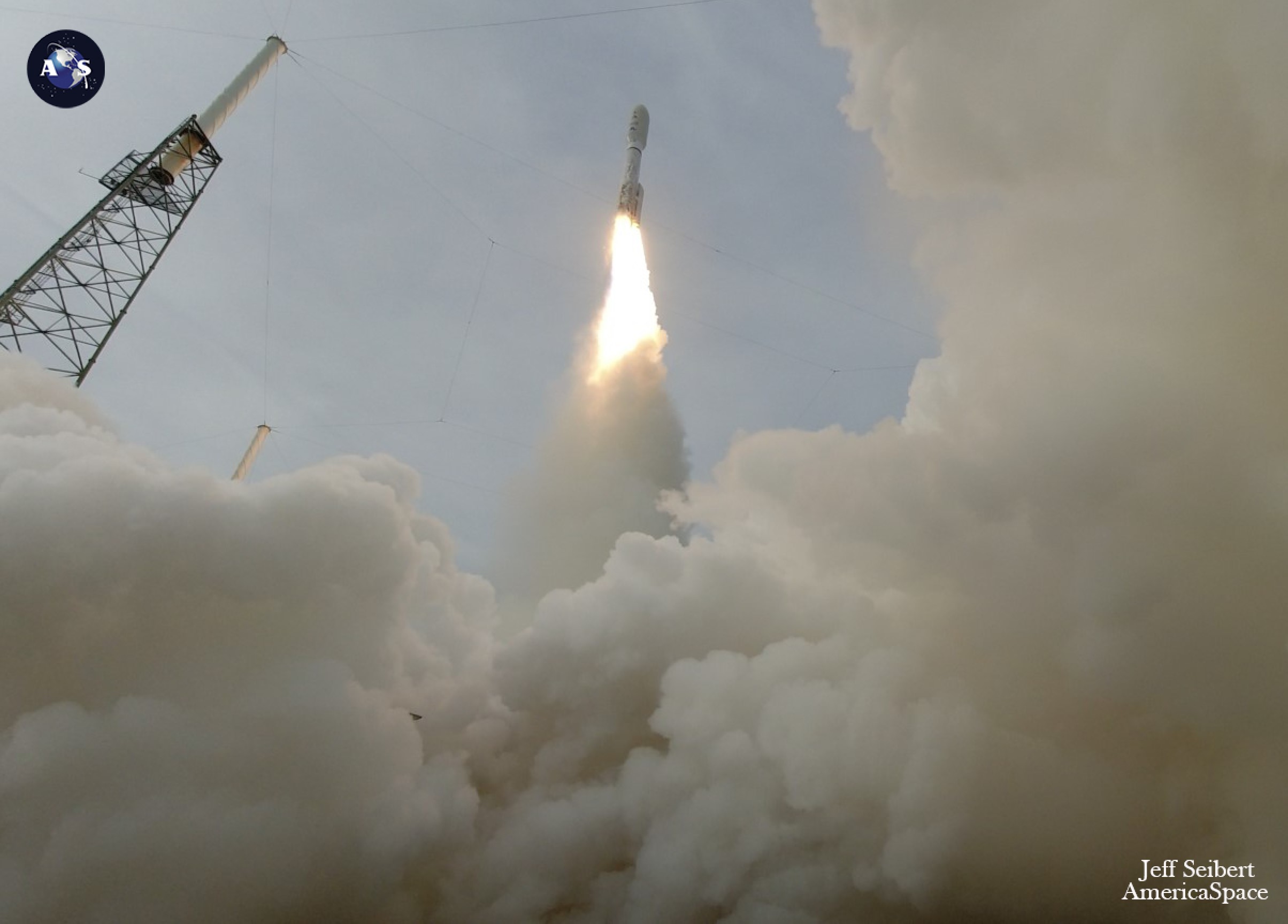
But following the creation of the U.S. Space Force in December 2019, the payloads were correspondingly renamed USSF-8 and USSF-12. The first of these missions, USSF-8—which comprised a pair of Geosynchronous Space Situational Awareness Program satellites, known as GSSAP-5 and GSSAP-6—successfully rode an Atlas V to orbit in January 2022.
Right from the contract award, the payload that later became USSF-12 was identified as a two-satellite combo. “The forward Space Vehicle (SV) is known as the Wide Field of View (WFOV) Testbed and the aft SV is a propulsive Evolved Expendable Launch Vehicle (EELV) Secondary Payload Adapter (ESPA) that hosts auxiliary payloads,” noted Air Force Space Command’s Space and Missile Systems Center (SMC) at Los Angeles Air Force Base in Los Angeles, Calif., in its announcement of the contract award. Since August 2021, the SMC became the Space Systems Command (SSC).
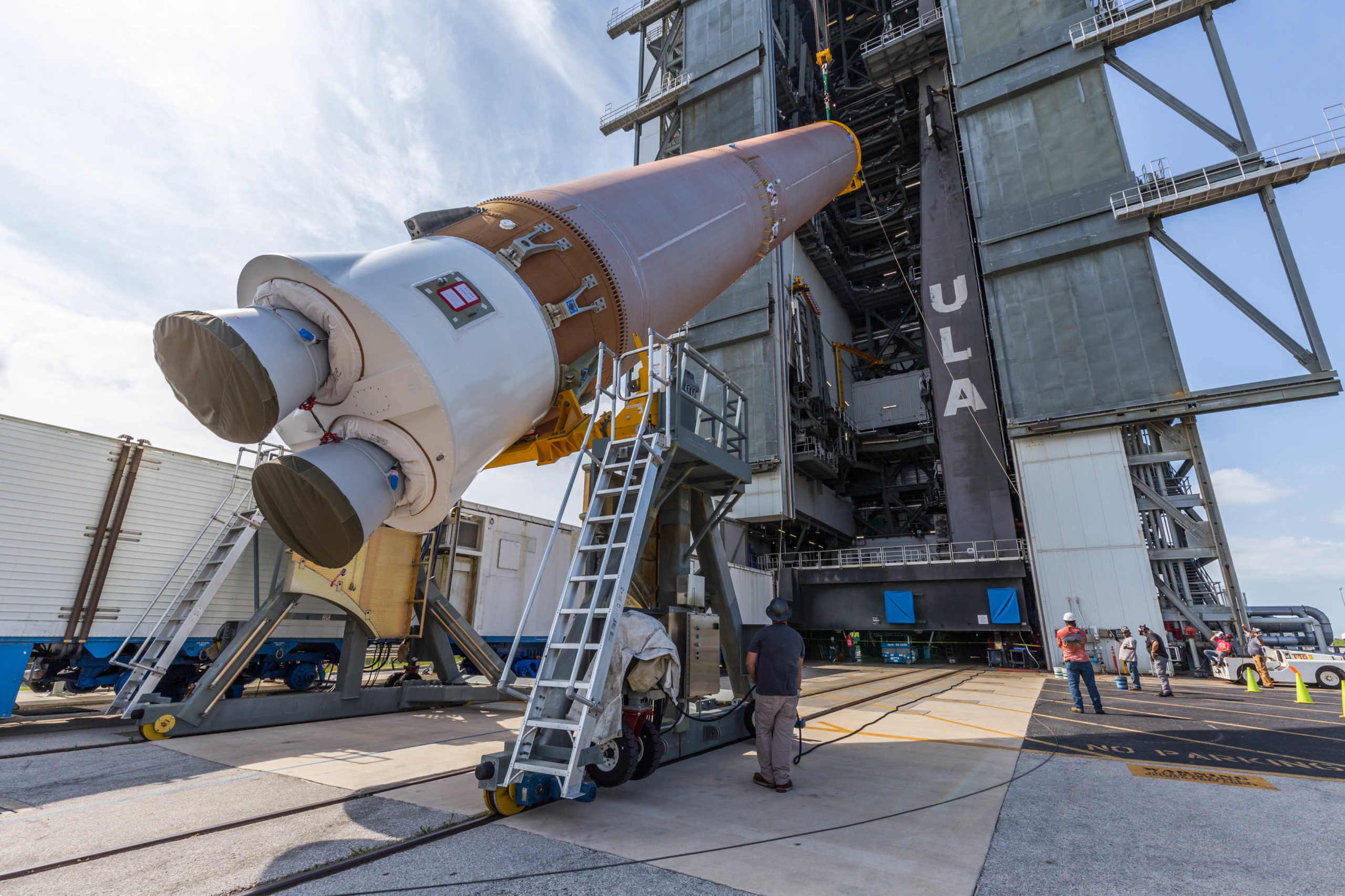
It was added that the payload was destined for geostationary altitude, some 22,600 miles (35,900 kilometers) above the Home Planet. Initially targeted for launch sometime in 2020, per the March 2018 Evolved Expendable Launch Vehicle (EELV) contract with ULA, the mission found itself delayed repeatedly, firstly to No Earlier Than (NET) August 2021, then into the early spring of 2022.
Formal preparation for the USSF-12 mission got underway on 27 May, with the Launch Vehicle On Stand (LVOS) campaign to erect the Atlas V’s 107-foot-long (32.6-meter) Common Core Booster (CCB) inside the 30-story Vertical Integration Facility (VIF) at SLC-41. The CCB is powered by a Russian-heritage RD-180 dual-nozzle engine, fueled by liquid oxygen and a highly refined form a rocket-grade kerosene, known as “RP-1”. The engine assigned to this mission marked the 100th RD-180 to fly.
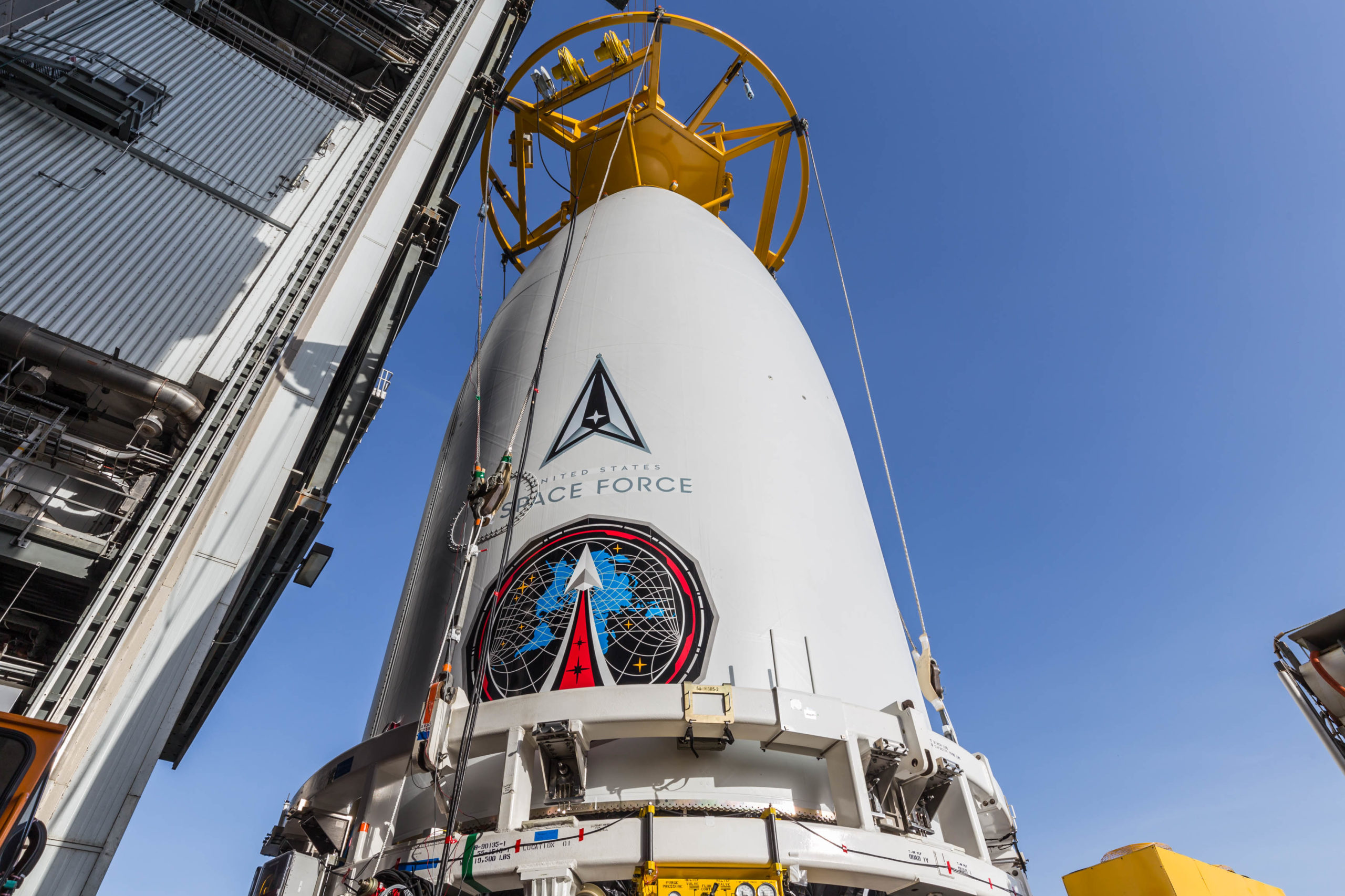
Following the Memorial Day holiday, four Northrop Grumman Corp.-built Graphite Epoxy Motors (GEM)-63 were attached to the CCB. On 6 June, the Centaur upper stage—powered by Aerojet Rocketdyne’s RL10-C-1 engine—together with the inter-stage adapter and the lower part of the payload fairing was mounted atop the stack. Finally, the payload fairing with the USSF-12 satellites aboard was attached on 15 June, topping off the Mighty Atlas V at 196 feet (59.7 meters) tall.
Last week, it was announced that the targeted 29 June launch date would slip 24 hours to the right, due to “weather impacting launch processing milestones”. On Sunday, with the forecasted weather having deteriorated from 70 percent to 60 percent favorability, the Launch Readiness Review (LRR) concluded without incident.
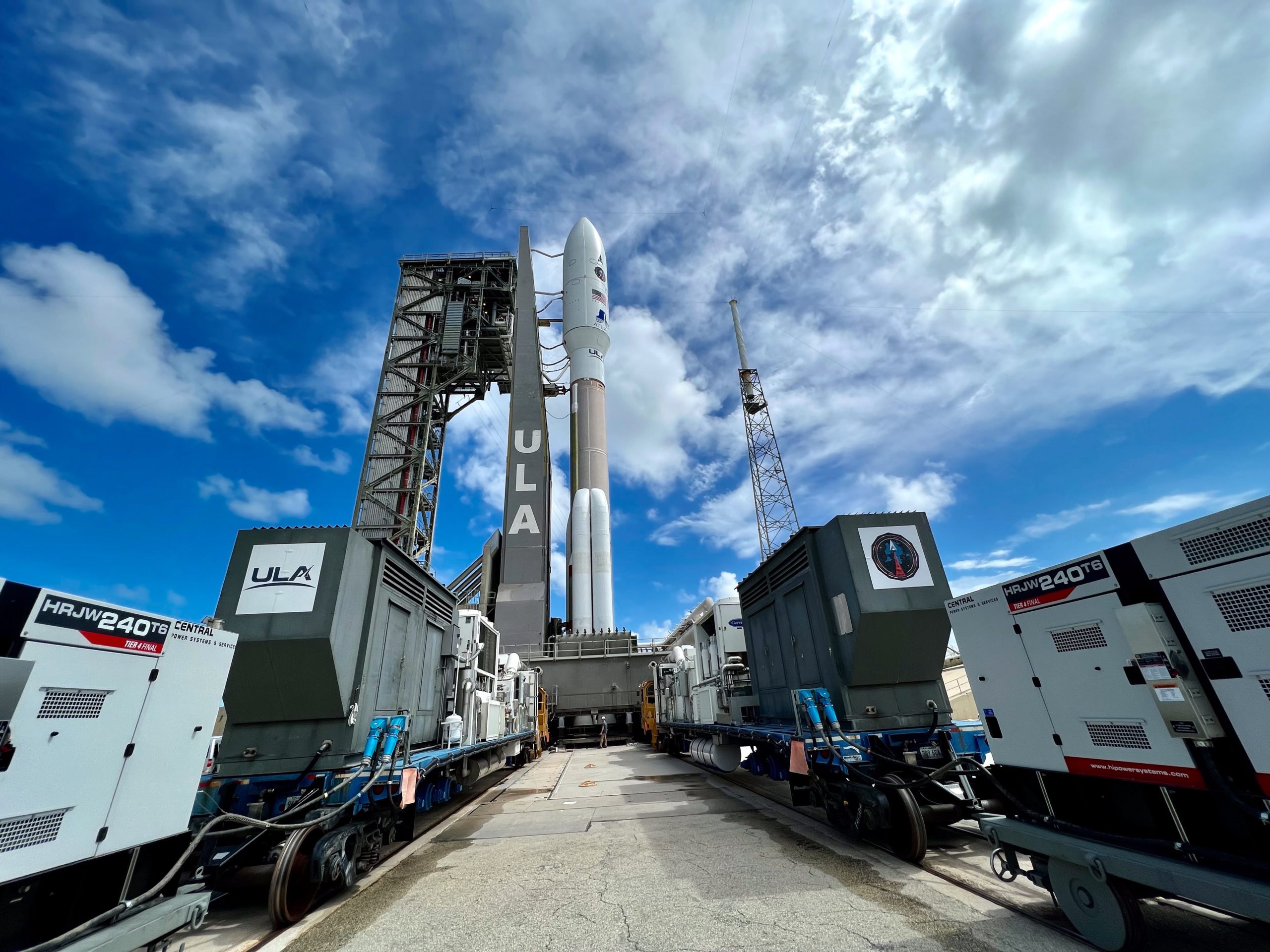
And on Wednesday, the Atlas V stack departed the VIF and rolled the quarter-mile (550-meter) distance to the SLF-41 pad surface. All told, the rollout lasted 73 minutes from “first motion” out of the VIF to being declared “hard-down” on the pad’s concrete pedestals. In the hours after arrival on the pad, the CCB was loaded with 25,000 gallons (113,650 liters) of RP-1 fuel.
Aboard tonight’s mission, USSF-12 consists of two discrete payloads. The Wide Field of View (WFOV) Testbed, sponsored by the SSC and managed by NASA’s Ames Research Center (ARC) of Moffett Field, Calif., will evaluate a new Overhead Persistent Infrared (OPIR) six-degree “staring” sensor known as the Wide-Area Six-Degree Payload (WASP).
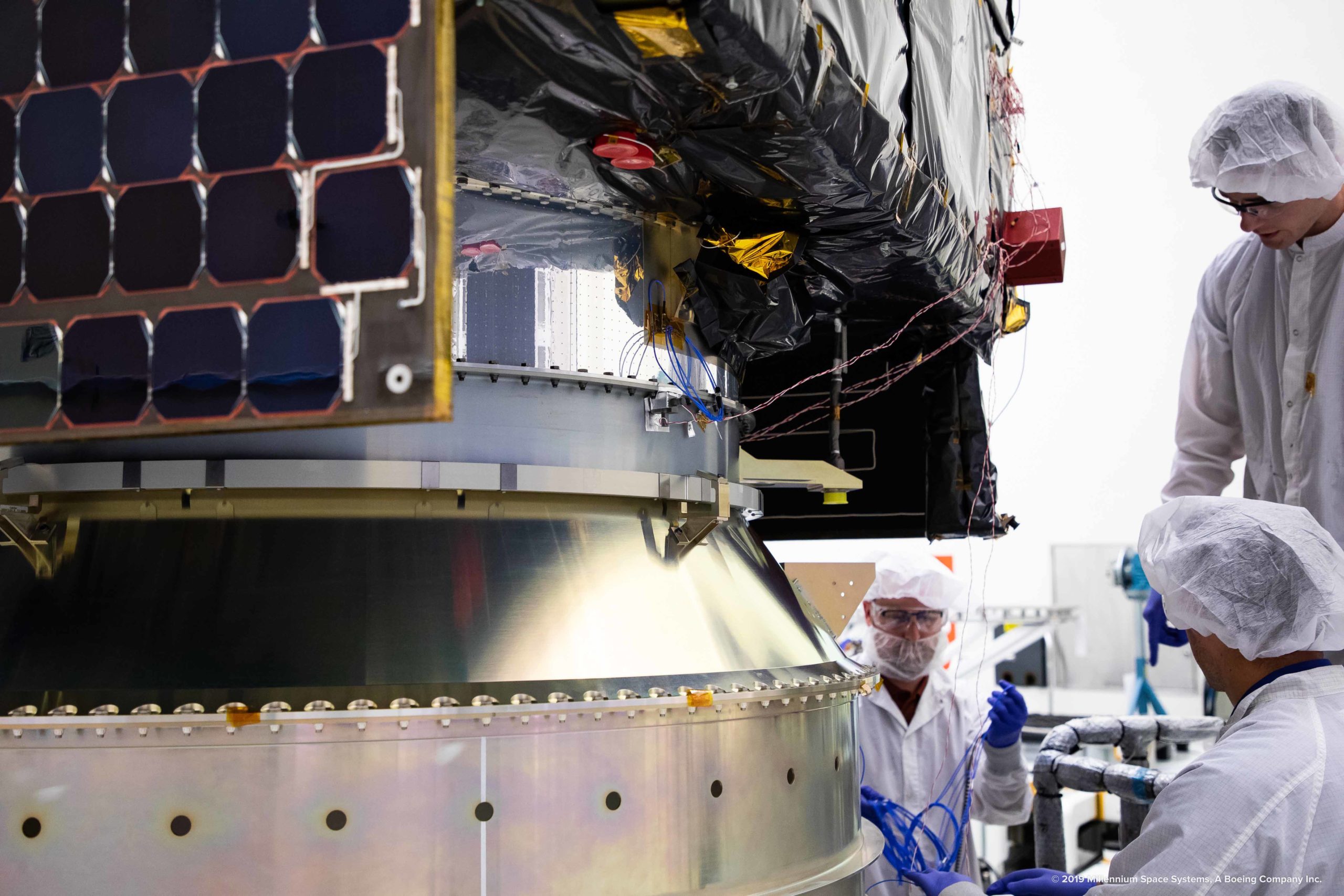
Built by L3Harris of Melbourne, Fla., the WASP sensor will fly aboard a mid-sized Geosynchronous Earth Orbit (GEO) spacecraft, built by Millennium Space Systems of El Segundo, Calif., and based upon its flight-proven Aquila-M8 “bus”. Millennium noted that the scalable nature of the Aquila-M8 made it possible to shorten the development cycle for the WFOV Testbed mission.
Designed for a one-to-three-year operational lifetime, the WFOV Testbed will explore the ability of a singular sensor to perform strategic and tactical missions simultaneously, by continuously monitoring up to one-third of Earth’s surface. “WFOV is also pathfinding prototype operationalization and Integrated Tactical Warning/Attack Assessment (ITW/AA) certification for future missions to follow,” explained Millennium.
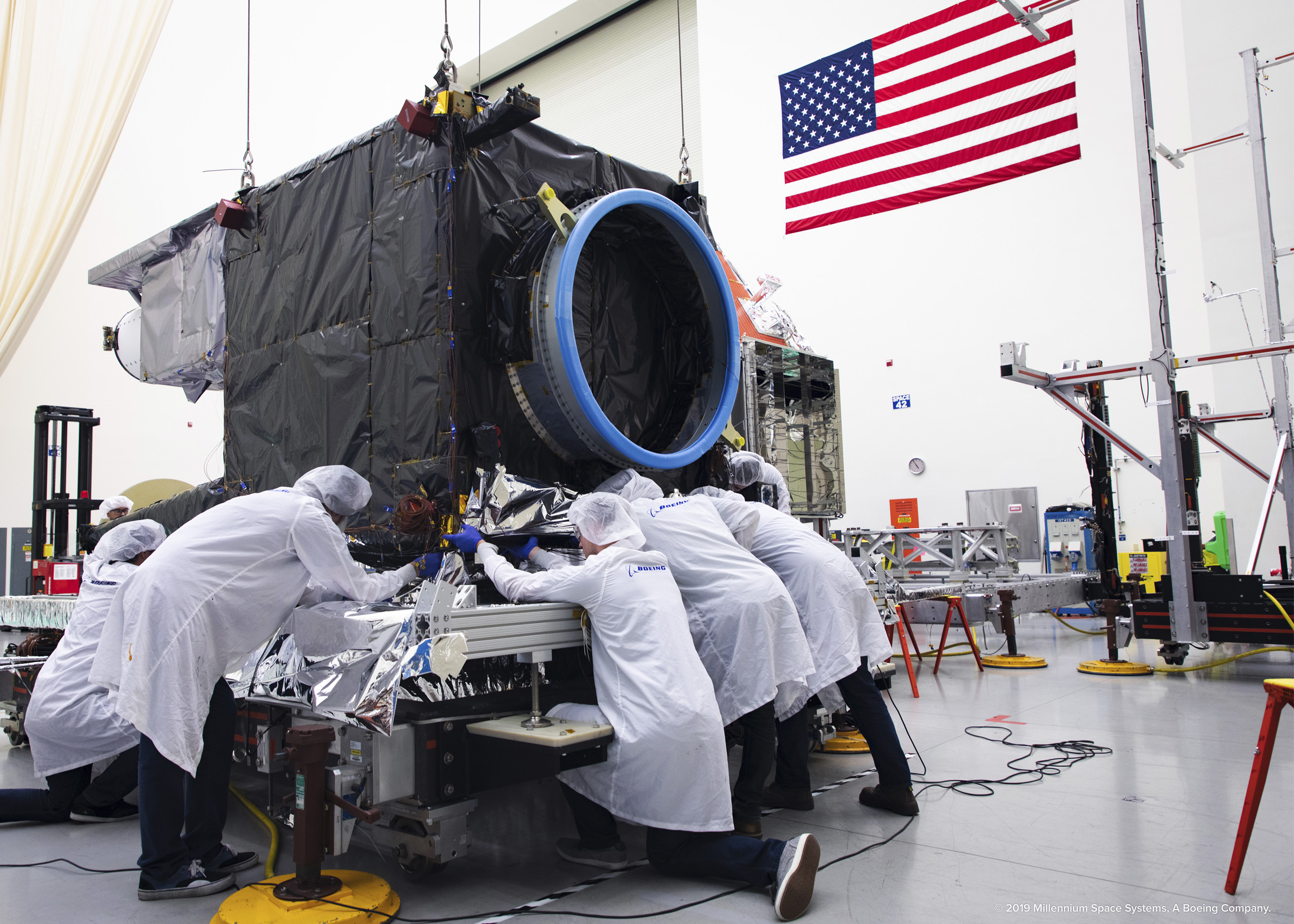
“With Wide Field of View, we’re advancing the technology we need to meet the growing threat environment,” said Col. Heather Bogstie, senior materiel leader for the Space Force’s Space Systems Command’s (SSC) Resilient Missile Warning, Tracking and Defense Acquisition Delta. “GEO WFOV will also let us qualify a new satellite bus for GEO at significant cost savings.”
The WFOV Testbed, which reportedly has a mass of around 6,600 pounds (3,000 kilograms), with a payload mass of about 770 pounds (350 kilograms), completed environmental testing at Boeing’s Space Environment Test Facility in El Segundo in September 2019 and was declared “Ready to Ship” in June 2020. The Ready to Ship milestone capped off a 16-month campaign to integrate and thoroughly test the WASP sensor.
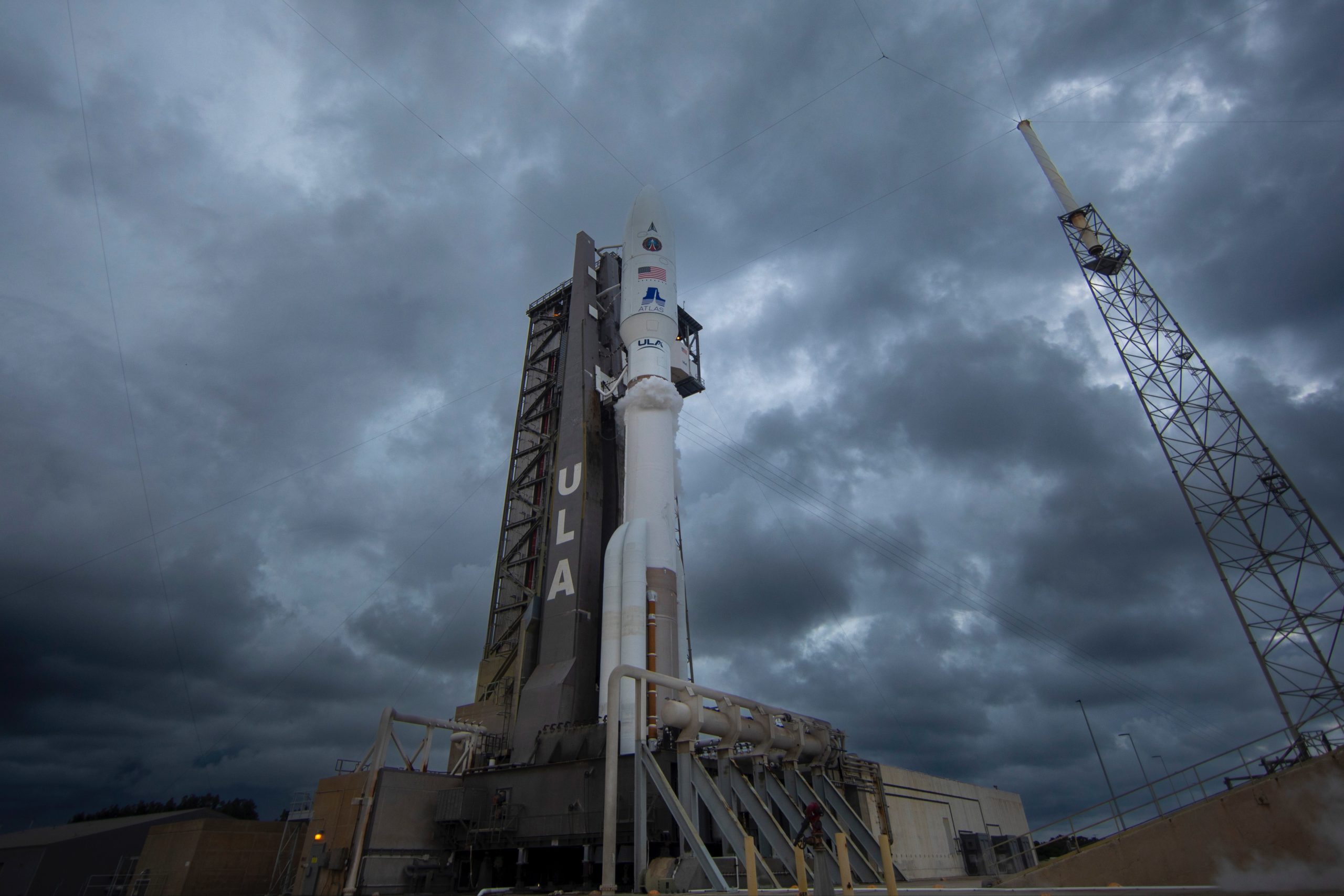
It was then put through a lengthy series of risk-reduction tests between the spacecraft and the ULA launch interfaces and their integrated ground segment. It was delivered to the Space Coast via truck earlier in 2022, arriving at the Cape Canaveral launch site on 2 February.
With the WFOV Testbed riding at the “top” of the USSF-12 stack, the secondary payload aboard tonight’s mission is surrounded by a tighter veil of secrecy. Described as the USSF-12 “Ring”, this highly classified payload is flying on behalf of the Department of Defense’s Space Test Program (STP). It consists of a Northrop Grumman-built propulsive Evolved Expendable Launch Vehicle (EELV) Secondary Payload Adapter (ESPA) and is dedicated to the demonstration of future space technologies.
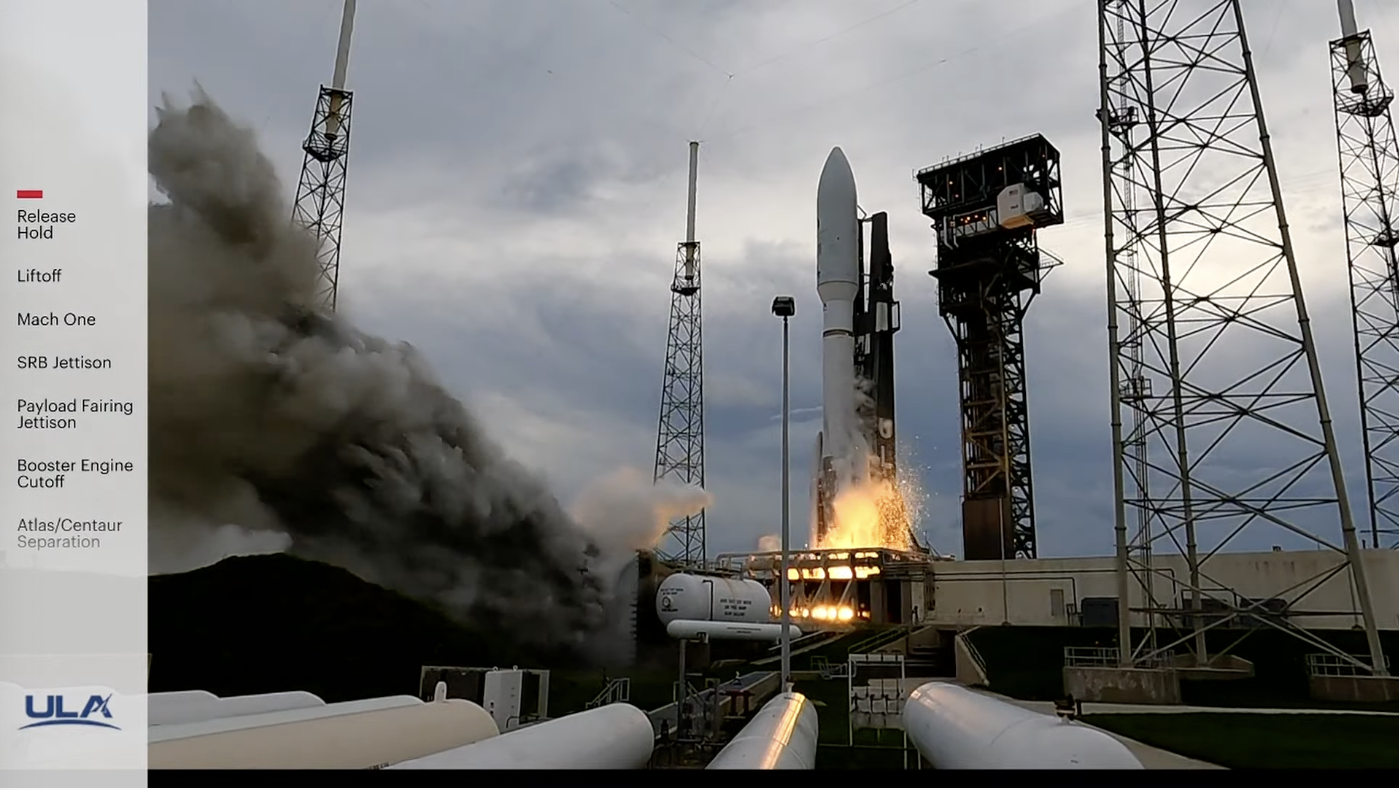
Thursday’s countdown proceeded without incident, when the weather took a turn for the worse and boards went “red” for violation of four key rules: the Cumulus Cloud Rule, the Anvil Cloud Rule, the Surface Electric Fields Rule and the Lightning Rule. “Bird is clean, but we just had a lightning strike nearby,” tweeted ULA CEO Tory Bruno. “We’ll have to clear the pad for a little while, then resume. Everybody, think calm, lightning-free thoughts.”
But it was not to be. The weather outlook fell to just 20-percent-favorable at the start of Thursday’s two-hour “launch window” and only 60 percent at the end. A weather briefing at 7:30 p.m. EDT concluded with the unwelcome news that conditions were not expected to improve before the 8 p.m. EDT closure of the window and Thursday’s attempt was scrubbed.
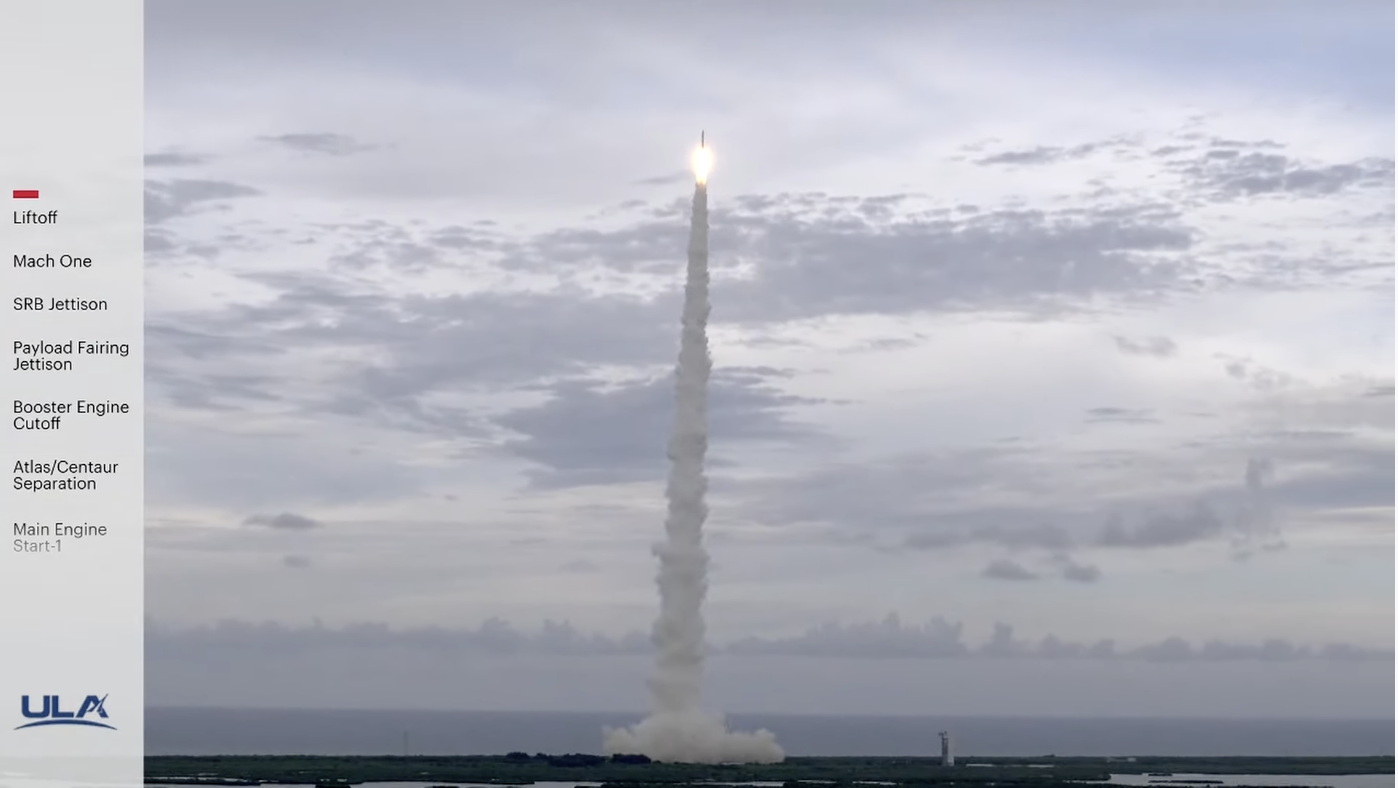
Teams set to work recycling for a second attempt on Friday, with an identical 6-8 p.m. EDT window. But Mother Nature again proved a harsh mistress to tame, as upper-level winds and anvil clouds over the pad refused to permit a launch at the opening of the window, pushing T-0 to no earlier than 7:15 p.m. EDT.
“Dang anvil cloud is parked on top of the pad,” tweeted Mr. Bruno with undisguised frustration. “Everybody, take a deep breath, face east and exhale.”
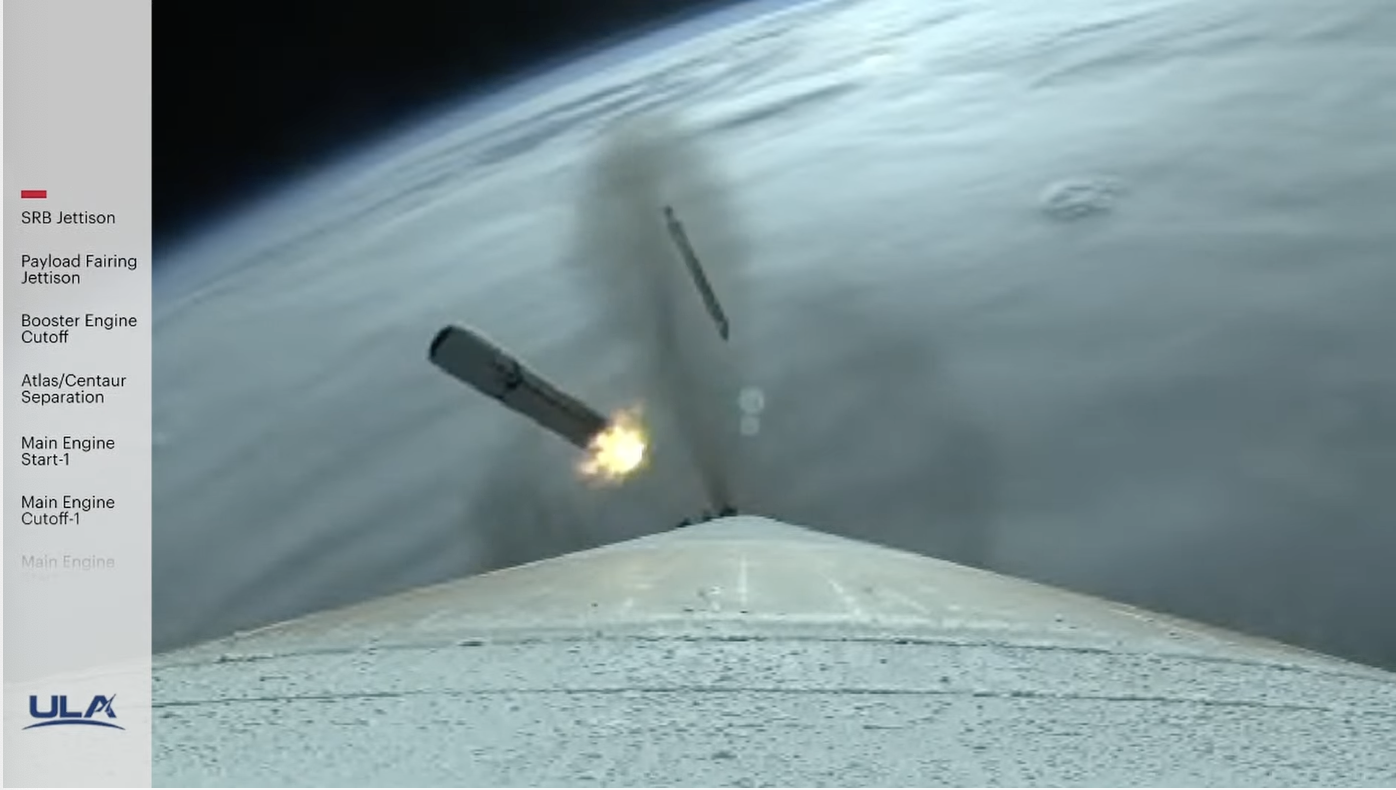
Finally, the weather fell into line and the Atlas V finally went airborne at 7:15 p.m. EDT. Powered uphill by the dual nozzles of its RD-180 engine and the four GEM-63 solid-fueled boosters, the Mighty Atlas rose from Earth under a combined thrust of 2.3 million pounds (1.04 million kilograms).
The solids burned out and separated at 110 seconds into flight, as the RD-180 continued to burn hot and hard until Booster Engine Cutoff (BECO) at 4.5 minutes after launch. The Atlas V CCB then separated from the stack.
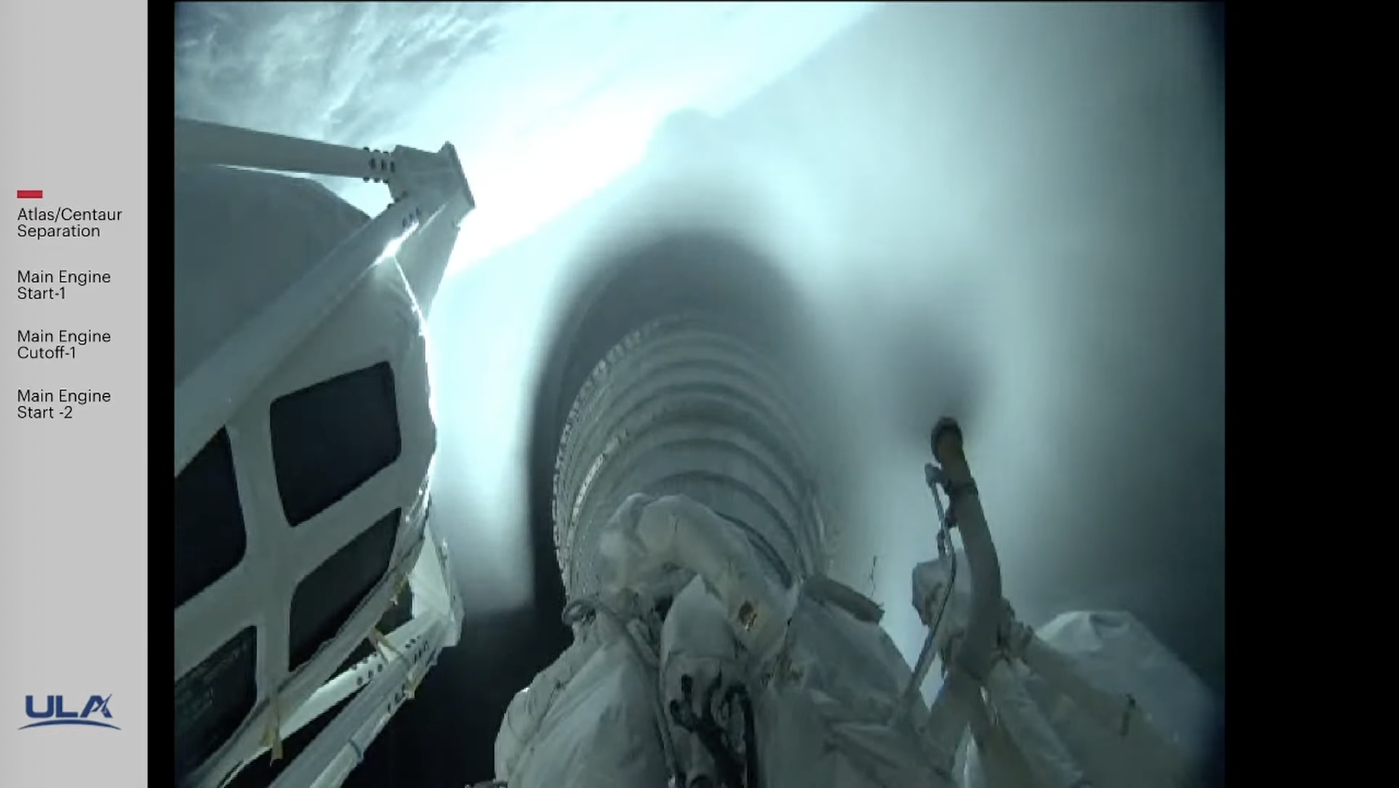
It was now the turn of the Centaur upper stage, which was tasked with three “burns” over a six-hour period to inject the WFOV Testbed and the USSF-12 Ring directly into GEO. Assisting the WFOV Testbed during this lengthy uphill climb to geosynchronous orbit is ULA’s In-Flight Power System (IFPS), which debuted on the STP-3 mission last December. The IFPS supplies auxiliary power and negates the need for the payload to be wholly reliant upon its pre-launch battery charge until its solar arrays are deployed in orbit.
The first Centaur burn, lasting just over six minutes, powered the stack to orbital velocity and achieved a preliminary orbit. Thirteen minutes later, a second burn, lasting 5.5 minutes, accelerated the Centaur/payload combo into a highly elliptical Geosynchronous Transfer Orbit (GTO).
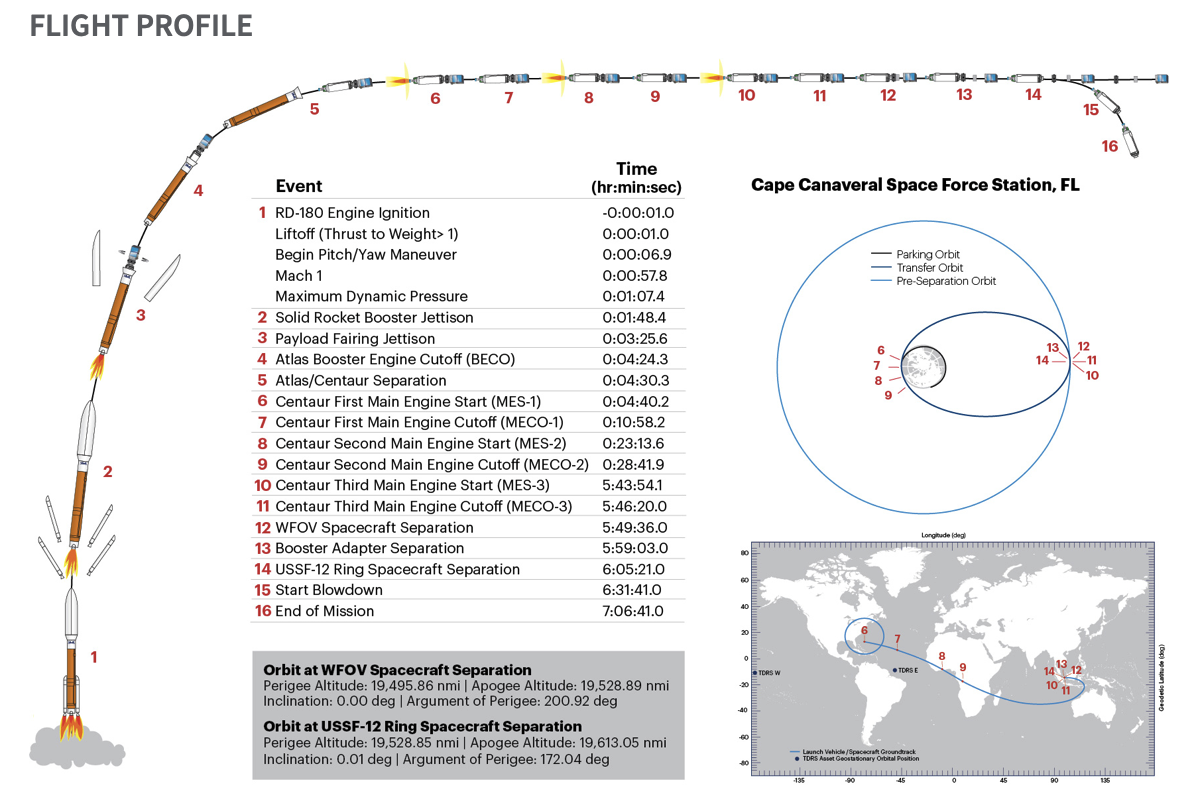
The stack then entered a quiescent state for the next five hours. As this AmericaSpace story was being prepared, the Centaur’s third and final burn is designed to circularize the orbit at geosynchronous altitude.
And the completion of that milestone should position the USSF-12 payloads for deployment. According to ULA’s published pre-launch parameters, the WFOV Testbed was scheduled to be deployed at five hours and 49 minutes after launch. The mysterious USSF-12 Ring would then depart some 15 minutes later.
Tonight’s success wraps up ULA’s third mission of the year, following on the heels of January’s USSF-8, March’s launch of the latest Geostationary Operational Environmental Satellite (GOES-T) and last month’s flight of Boeing’s CST-100 Starliner on the long-awaited Orbital Flight Test (OFT)-2 to the International Space Station (ISS).
Looking ahead, ULA has a busy raft of missions for the second half of 2022, including—possibly—the Crew Flight Test (CFT) of the CST-100 Starliner. Earlier in June, NASA announced that veteran astronauts and seasoned ISS commanders Barry “Butch” Wilmore and Sunita Williams will fly CFT for an open-ended mission expected to last at least two weeks. They will become the first humans to ride a Mighty Atlas since the day-long flight of “Original Seven” Mercury astronaut Gordon Cooper on Faith 7, way back in May 1963.
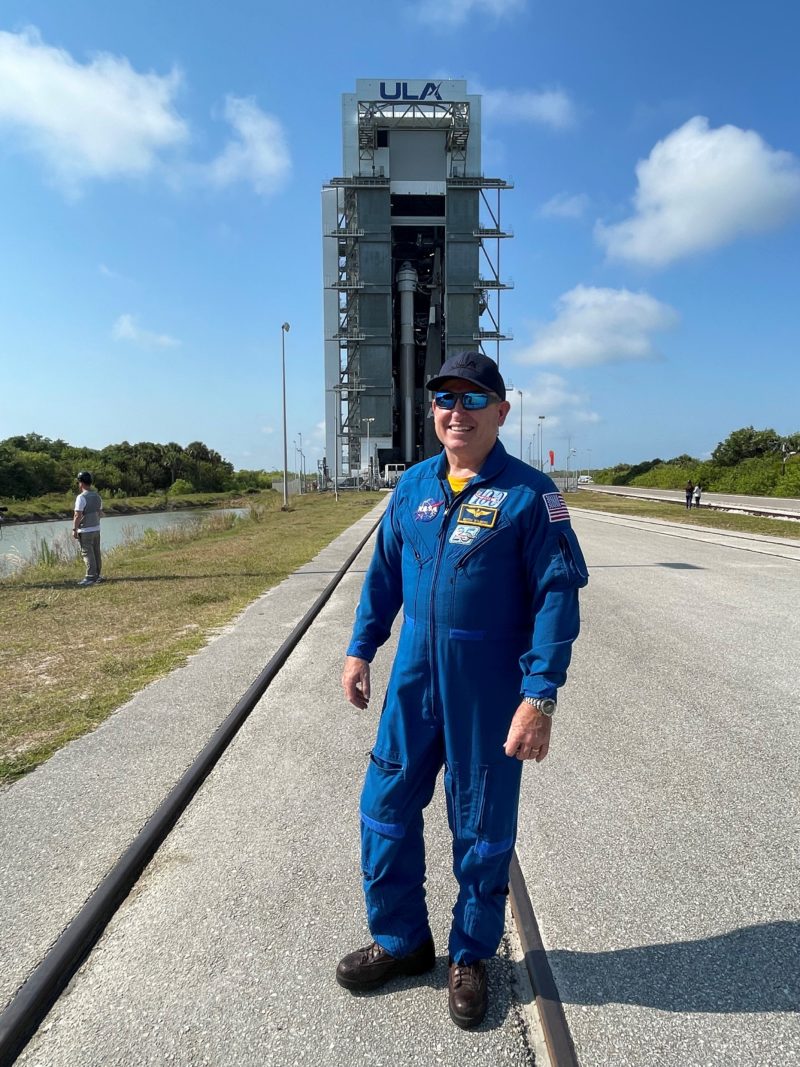
In addition to CFT, ULA aims to fly the U.S. Space Force’s USSF-51 and the sixth and final geosynchronous-orbiting element of the Space-Based Infrared System (SBIRS GEO-6), the dual-stacked SES-20 and SES-21 communications satellites and the highly classified NROL-107—codenamed “SILENTBARKER”—from Cape Canaveral Space Force Station before year’s end.
In addition, the last scheduled Atlas V flight out of Vandenberg Space Force Base, Calif., is due to carry the second NASA-led Joint Polar Satellite System (JPSS-2). And with a Delta IV Heavy also set to fly out of Vandenberg with the NROL-91 classified payload, plus the first Vulcan-Centaur mission, 2022 might end on 12 flights, ULA’s most-flown year since 2016.




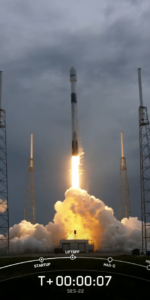
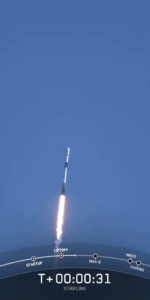
2 Comments
2 Pings & Trackbacks
Pingback:ULA Readies Mighty Atlas for 4 August Launch of Last SBIRS GEO Satellite - AmericaSpace
Pingback:Atlas V Launches Last SBIRS, as ULA Looks Ahead to Mission-Filled Fall - AmericaSpace